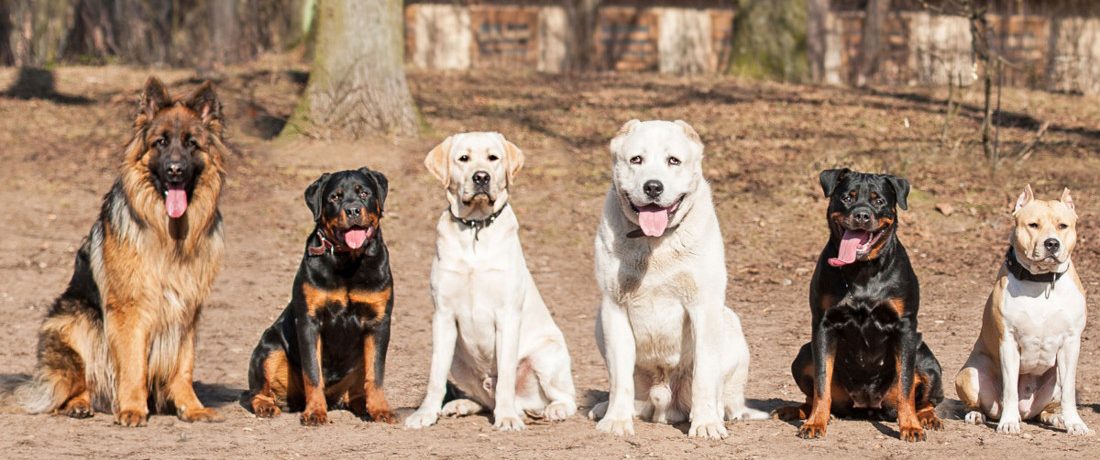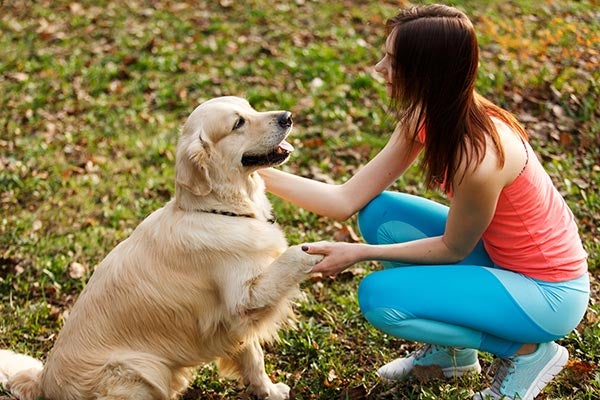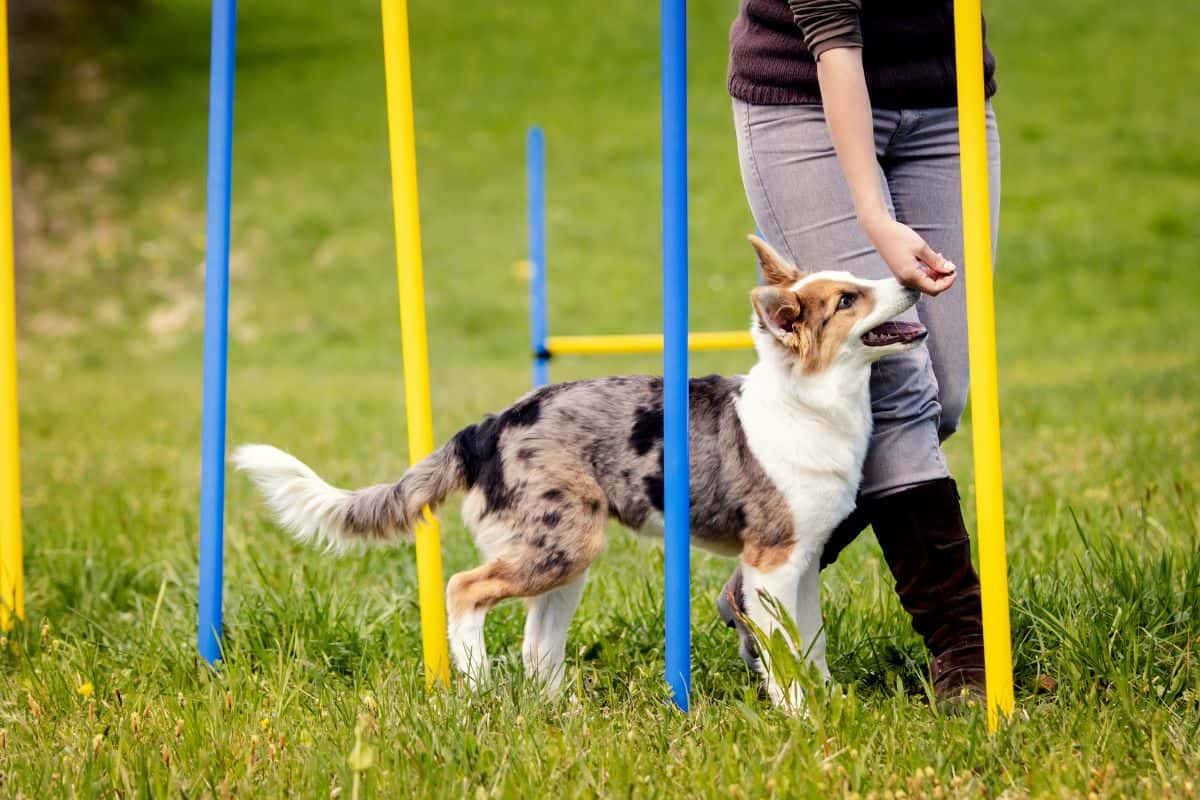Essential Tips for Effective Dog Training: An Overview for Pet Dog Owners
Reliable canine training is a multifaceted procedure that calls for a tactical method customized to both the animal's personality and the owner's objectives. Understanding exactly how to navigate these obstacles can significantly enhance the training experience, inevitably transforming the partnership between proprietor and pet dog.
Recognizing Dog Actions
Recognizing dog habits is important for efficient training and promoting an unified connection in between pooches and their owners. dog training. Dogs interact largely through body language, vocalizations, and actions, making it vital for proprietors to interpret these signals precisely.

Socialization plays a substantial duty in pet actions; direct exposure to different atmospheres, individuals, and various other pets can substantially affect a canine's personality. In addition, variables such as type qualities and specific personality ought to direct training techniques, as some types may have certain behavioral attributes that demand tailored approaches. By recognizing these components, owners can create a supportive environment that encourages favorable actions, leading to effective training results and a much deeper bond with their family pets.
Developing Consistent Commands
Effective communication with your dog starts with developing regular commands. This foundational component of training is vital for fostering understanding in between you and your pet dog. Consistency in the commands you use makes sure that your pet can accurately link particular words or phrases with the desired behaviors.
When picking commands, select clear, unique words that are simple to separate and state from one another. Prevent utilizing similar-sounding commands that might perplex your pet dog. Using "rest" and "remain" is suitable, however "sit" and "struck" can lead to misconceptions.
Furthermore, preserve the very same tone and quantity for each command. Dogs are sensitive to vocal signs, so differing your tone can develop confusion.
It is just as important to make certain that all member of the family get on the very same web page regarding the commands utilized. A united front in command usage will certainly avoid blended signals and reinforce the understanding process.
Favorable Support Techniques
The power of positive reinforcement in pet training hinges on its capacity to encourage preferred behaviors with incentives and appreciation. This strategy is grounded in the principle that behaviors adhered to by beneficial end results are a lot more likely to be duplicated. By including positive reinforcement into your training regimen, you can properly shape your dog's behavior in a constructive manner.
To apply favorable support, it's vital to recognize what motivates your canine, whether it be treats, playthings, or spoken praise. When your pet dog carries out a preferred activity, such as resting on command, promptly compensate them with a reward or love. This association between the command and the favorable end result reinforces their understanding.
It's important to timing the incentives correctly; delivering the reinforcement within seconds of the preferred behavior helps your canine make the link (dog training). In addition, consistency is essential-- make certain that all relative make use of the same commands and benefit systems to avoid complication

Progressively, you can decrease the frequency of deals with as your pet finds out the habits, transitioning to commend or intermittent rewards. This method not just cultivates a strong bond between you and your dog however additionally advertises a favorable learning setting, making training a pleasurable experience for both.
Socialization and Interaction
Continually revealing your dog to a variety of settings, individuals, and various other pets is essential for their social advancement. Socializing ought to start early, preferably throughout the critical home window of 3 to 14 weeks, when puppies are most responsive to new experiences. Nonetheless, older dogs can additionally click here to read take advantage of recurring socializing initiatives.
Present your pet dog to various settings, such as parks, pet-friendly shops, and metropolitan areas. This direct exposure aids them adapt to different stimulations, lowering stress and anxiety and concern actions. Encourage click this favorable interactions with other pet dogs and individuals, making sure that these encounters are controlled and risk-free to foster confidence.
Use structured playdates with courteous pet dogs, as this can enhance your pet's social skills and educate them proper actions. Obedience classes and training sessions likewise supply outstanding chances for socializing, allowing your dog to connect with others in a monitored setting.
Screen your pet's body movement throughout communications, as this will certainly aid you gauge their comfort degree. Gradually increase exposure to even more challenging situations while making certain that each experience is favorable. A well-socialized pet dog is more probable to exhibit balanced actions, making them a delight to have in any kind of setting.
Resolving Usual Training Obstacles
Every canine owner will certainly encounter training challenges at some point, despite their dog's age or socializing degree. Recognizing usual issues such as stubbornness, interruptions, and fearfulness can help in establishing reliable methods for renovation.

Interruptions throughout training sessions can thwart focus. To combat this, begin training in a peaceful setting with marginal stimuli. Slowly introduce disturbances as the dog ends up being more skillful in commands. Short, frequent training sessions are likewise efficient in keeping interest.
Terror can prevent a canine's understanding procedure. Progressive desensitization to the resource of worry, coupled with positive reinforcement, can aid ease anxiousness. Persistence is important; never ever compel a Look At This pet dog right into a scenario that causes distress, as this might worsen the problem.
Ultimately, understanding and resolving these typical challenges with a structured method will promote a much more effective training experience, enhancing the bond in between canine and owner while promoting reliable knowing.
Conclusion
In recap, effective pet training relies upon a comprehensive understanding of canine habits, the facility of constant commands, and the application of favorable support methods. Socializing plays a critical role in developing well-adjusted pet dogs, while dealing with usual training challenges requires patience and adaptability. By applying these important methods, pet owners can foster a strong bond with their pets and promote desirable habits, ultimately bring about a harmonious relationship between human beings and their canine companions.
Recognizing dog habits is vital for effective training and fostering an unified partnership in between pooches and their proprietors.Socializing plays a considerable function in pet actions; exposure to numerous settings, people, and other pets can significantly affect a canine's temperament.The power of favorable reinforcement in dog training lies in its capability to encourage wanted habits via incentives and praise. By integrating favorable support right into your training routine, you can effectively shape your pet dog's habits in a useful fashion.
In recap, effective dog training depends on a detailed understanding of canine behavior, the establishment of consistent commands, and the application of positive support methods.
Comments on “Understanding Canine Body Language Throughout Dog Training”